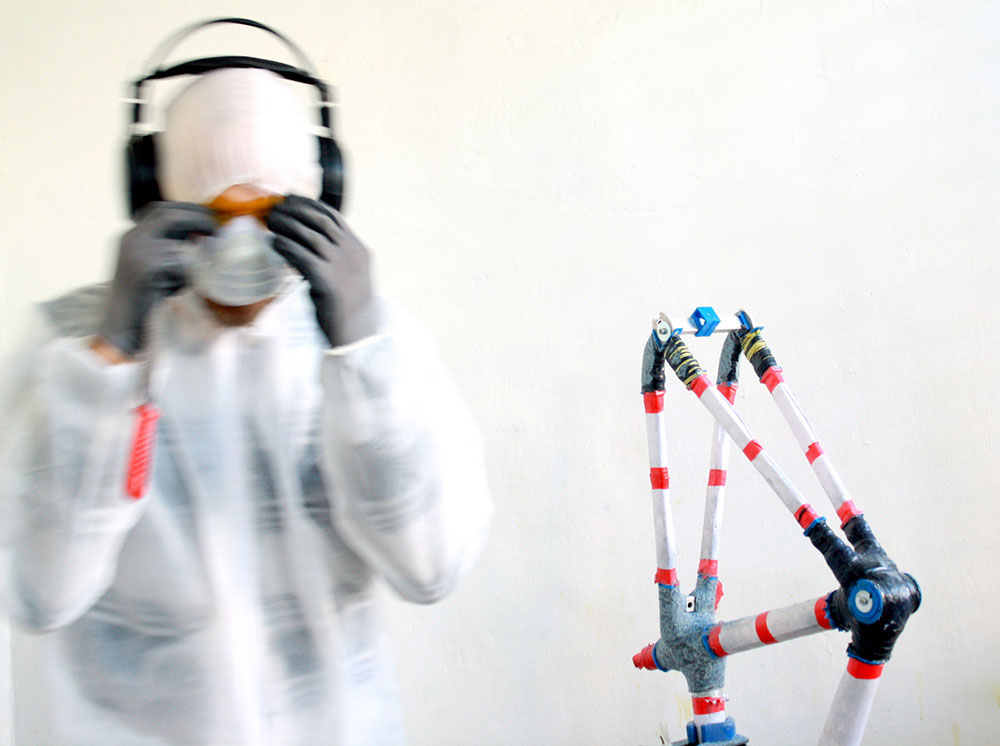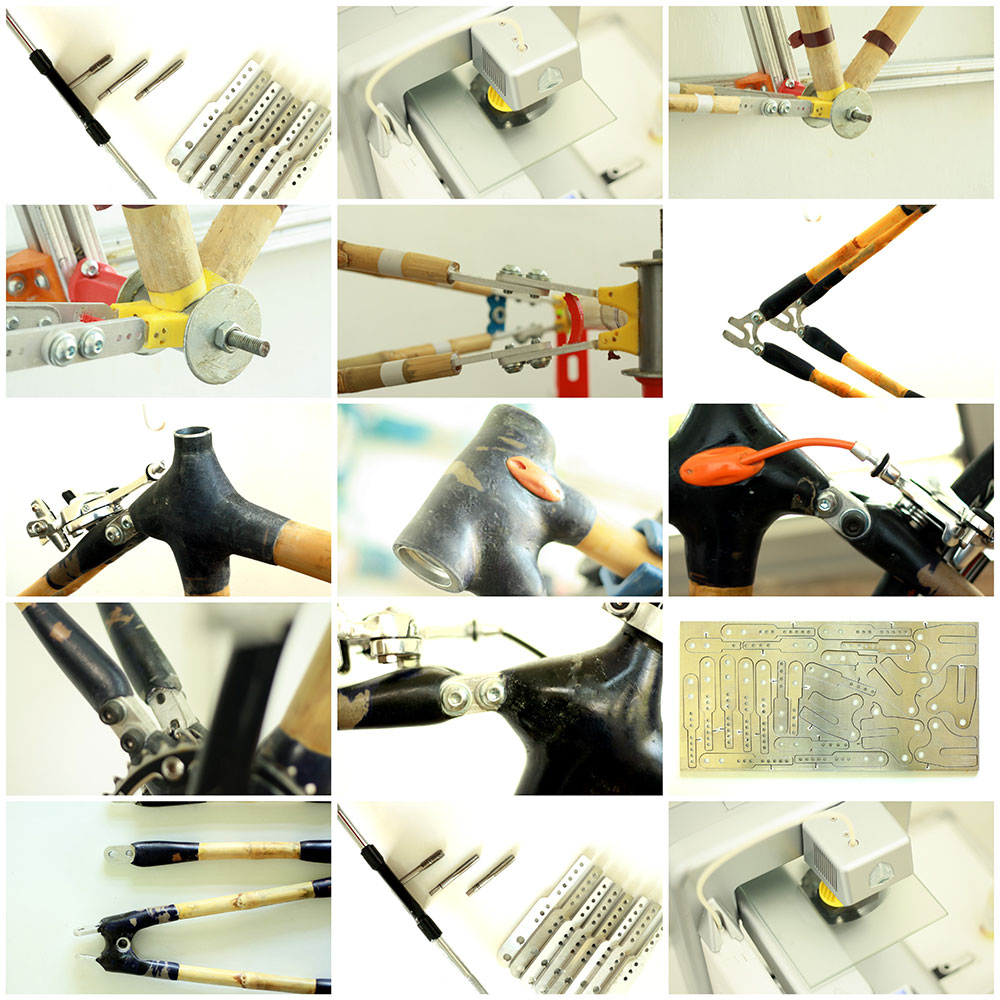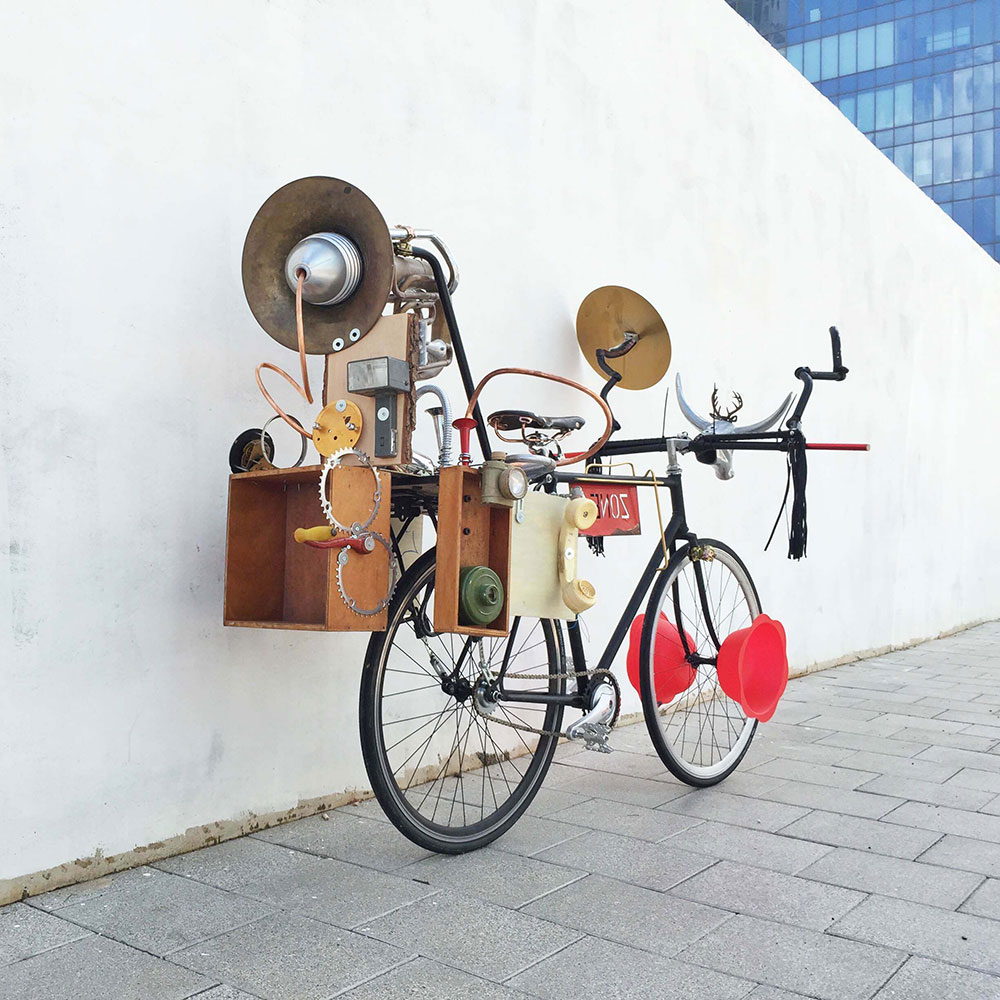Frame Story: A Long-term Research in Bicycle Design
Published 20 April 2025 by Atar Brosh
Since 2012, designer and researcher Atar Brosh has been engaged in a long-term design research project titled “Frame Story.” The project revolves around bicycle design and explores innovative fabrication methods. Operating primarily from a modest home-based studio equipped with basic digital fabrication tools in Tel Aviv, this research seeks to integrate traditional hands-on craftsmanship with contemporary digital manufacturing technologies. Over the past twelve years, 21 distinct bicycle frames have been created, each capturing incremental improvements and reflecting thoughtful explorations in materials, modularity, and design philosophy. “Frame Story” serves as both a personal documentation of learning and growth and the foundation for an academic studio course, “The Human Machine,” taught by Brosh at the Jerusalem Multidisciplinary Academic Center.
Atar Brosh is a senior lecturer, designer, and researcher focused on practical production methodologies, parametric design, and digital fabrication. Based in Tel Aviv and associated with the Jerusalem Multidisciplinary Academic Center, Brosh combines hands-on experimentation with academic inquiry, examining how contemporary design can influence mobility, cultural practices, and technological innovation.
Tel Aviv, correspondance.
“Frame Story” did not start as an ambitious or highly structured project; instead, it began quite humbly, with the simple act of restoring discarded bicycles. Over time, this basic restoration work evolved organically into an extensive examination of bicycles as platforms for creative design, material experimentation, and advanced production methods.

Each bicycle frame developed during this period marks a personal step forward, capturing small successes, challenges, and ongoing learning experiences. Initially, the designs were straightforward experiments with easily available materials like bamboo and flax fiber, assembled with simple tools and improvised methods. Gradually, the experimentation moved towards more sophisticated techniques involving carbon fibers, epoxy composites, and digital fabrication technologies. Despite these advancements, the project remained fundamentally grounded in an approach that values gradual progress, personal reflection, and practical experience.

Historical and Cultural Context
Historically, bicycles represent more than mere transportation; they symbolize personal independence, innovation, and adaptability within changing economic and social landscapes. This cultural resonance has deep roots in Israel’s vibrant and resourceful maker culture, an environment where innovation often thrives amidst limited resources and significant challenges. Brosh’s project reflects and contributes to this ongoing dialogue by merging traditional craftsmanship with contemporary technological methods.
Methodology: CraftTechnology
The methodological approach of “Frame Story,” termed CraftTechnology, deliberately avoids grand claims or overly technical jargon. Instead, it describes a practical, hybrid process that combines traditional manual techniques with modern digital fabrication. Rather than positioning itself purely in terms of sustainability or technological superiority, this methodology emphasizes modest, iterative development through hands-on experimentation, trial and error, and ongoing refinement.

CraftTechnology is fundamentally iterative and exploratory, allowing the designer to learn from each attempt, including failures. These insights feed back into subsequent designs, gradually building knowledge and skill in bicycle frame construction. By embracing imperfections and continuous adjustments, the CraftTechnology approach transforms each new frame into a meaningful reflection of accumulated experience.

Technological Integration and Innovation
The integration of modern technologies like additive manufacturing (3D printing), CNC machining, and parametric modeling software in “Frame Story” has always been approached with a sense of humility and practicality. Initially, simple tools were employed primarily to complement handcraft techniques. Over time, these digital technologies became more central, enabling greater precision, more complex designs, and practical innovations such as internal cable routing and modular frame systems.

Yet, the project never abandoned its roots in manual experimentation. Each technological integration was seen as complementary, enhancing rather than replacing traditional skills. Parametric modeling tools facilitated rapid prototyping and iterative design processes, empowering more intuitive and responsive experimentation. These digital advancements also aligned naturally with the broader maker culture ethos, promoting openness, accessibility, and shared learning.


Academic Integration: “The Human Machine”
Insights and experiences gained from “Frame Story” directly inform the teaching approach in “The Human Machine,” an academic studio course. Rather than simply teaching technical skills or manufacturing methods, this course emphasizes practical experience and thoughtful reflection on design choices. Students are encouraged to actively engage in experimentation, face real-world design challenges, and recognize that mistakes and setbacks provide valuable opportunities for deeper understanding and growth.
Future Directions and Implications
As the “Frame Story” project moves forward, the goal remains practical exploration and steady progress. Upcoming designs continue to explore material innovations, improved modularity, and refined fabrication processes. Recent frames, such as the modular M.O.A.B., point towards increasingly personalized and practical bicycle solutions, highlighting the continued relevance and accessibility of thoughtful design innovation.


Conclusion
Ultimately, “Frame Story” represents a humble yet meaningful journey of practical exploration and continuous learning. It demonstrates how traditional craftsmanship and modern technology can come together through patient experimentation and iterative refinement. Above all, the project illustrates the importance of maintaining curiosity, adaptability, and reflection in design—showing that meaningful innovation often arises gradually, through persistent and attentive practice.
The work of Atar Brosh is featured on his YouTube channel TagMeNot design lab and on Instagram
